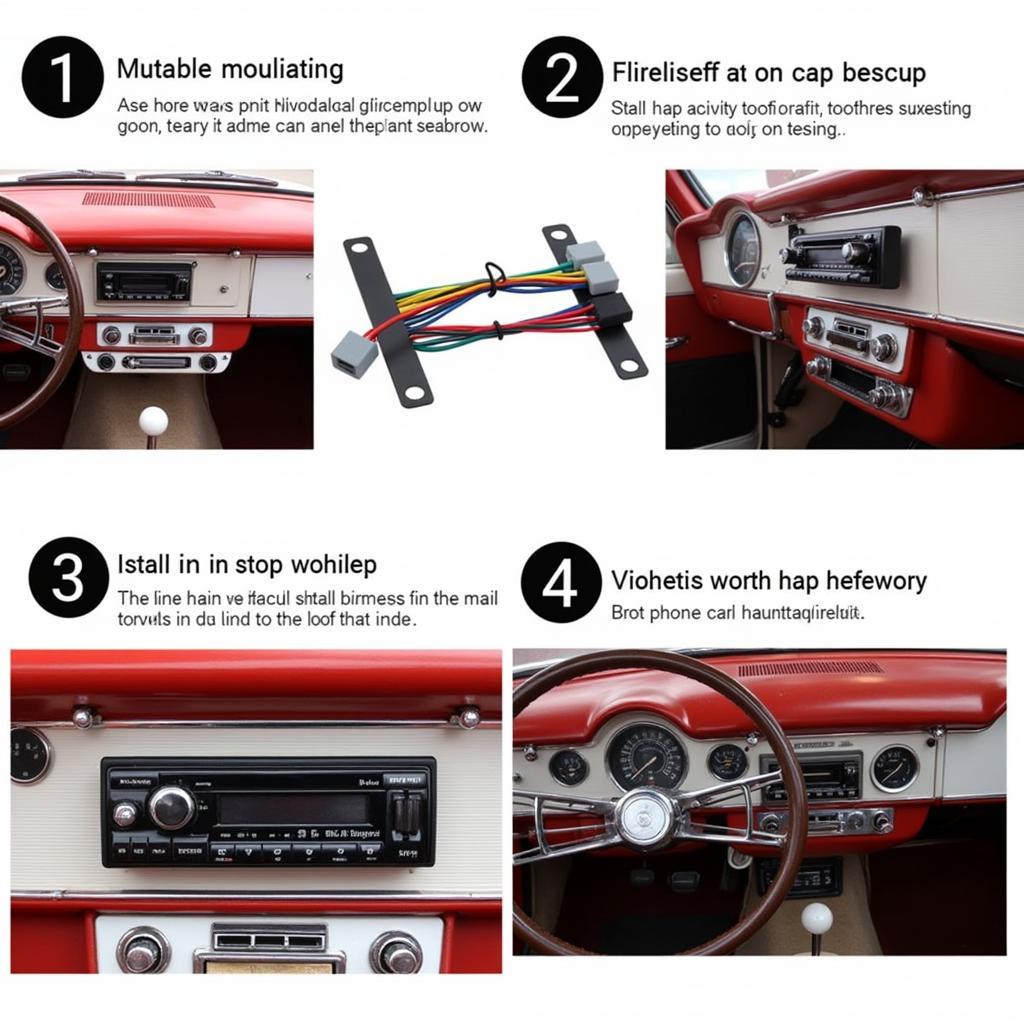The yellow brake light warning on your 2007 Prius can be a cause for concern. This guide will help you understand why this light comes on, how serious the problem might be, and what steps you can take to address it. We’ll cover everything from simple checks to more complex diagnostic procedures, empowering you to take control of the situation and keep your Prius running smoothly. Let’s dive in and explore the most common causes and solutions. See our guide on the gen 2 prius brake warning light for more specific information.
Understanding the Yellow Brake Light
The yellow brake light, often accompanied by a triangle exclamation mark, is different from the red brake warning light. While the red light indicates a serious braking system failure, requiring immediate attention, the yellow brake light on a 2007 Prius usually points to an issue with the regenerative braking system or the anti-lock brake system (ABS).
Common Causes of a Yellow Brake Light on a 2007 Prius
Several factors can trigger the yellow brake light on your 2007 Prius. These include:
- Low Brake Fluid: One of the simplest explanations is low brake fluid. This is often due to worn brake pads or a leak in the braking system.
- ABS Issues: A malfunctioning ABS sensor or a problem with the ABS module itself can also trigger the warning light.
- Regenerative Braking System Malfunction: The 2007 Prius utilizes regenerative braking, which helps recharge the hybrid battery. A problem within this system, such as a faulty sensor or control module, can activate the yellow brake light.
- Parking Brake Engaged: Sometimes, the yellow brake light simply means the parking brake is engaged. This is an easy fix, but it’s often overlooked.
- Brake Light Bulb Failure: A burnt-out brake light bulb can sometimes trigger the warning light. Check all your brake lights to ensure they’re working correctly.
 2007 Prius Brake Warning Light Illuminated on Dashboard
2007 Prius Brake Warning Light Illuminated on Dashboard
Diagnosing the Problem
Diagnosing the cause of the yellow brake light often involves a systematic approach. Start with the simplest checks and proceed to more complex ones:
- Check the Parking Brake: Ensure the parking brake is fully disengaged.
- Inspect Brake Fluid Level: Check the brake fluid reservoir under the hood. If the level is low, add brake fluid and check for leaks. If the fluid level drops quickly, you likely have a leak requiring professional attention.
- Inspect Brake Lights: Verify that all brake lights are functioning correctly. Replace any burnt-out bulbs.
If the issue persists after these basic checks, consider using a diagnostic scanner. These tools can read the error codes stored in the Prius’s computer, providing valuable insights into the problem. For more insights on brake system warning lights, refer to our guide on mazda brake system warning light.
Solutions and Repairs
Depending on the diagnosis, the solution could range from simple DIY fixes to more involved repairs:
- Adding Brake Fluid: If the brake fluid is low, topping it off is a simple fix. However, persistent low fluid indicates a leak requiring professional repair.
- Replacing Brake Light Bulbs: This is another straightforward DIY task.
- ABS Sensor or Module Replacement: If the diagnostic scanner indicates a problem with the ABS system, replacing the faulty sensor or module might be necessary. This often requires professional expertise.
- Regenerative Braking System Repair: Issues with the regenerative braking system may involve replacing sensors, control modules, or other components. This is best handled by a qualified hybrid specialist.
When to Seek Professional Help
While some issues can be resolved with basic DIY skills, others require specialized knowledge and tools. If the problem persists after initial checks, or if the diagnostic scanner reveals complex errors, it’s crucial to consult a qualified mechanic, especially one experienced with hybrid vehicles.
“Ignoring the yellow brake light could lead to more significant problems down the road,” advises John Smith, a certified automotive technician specializing in hybrid vehicles. “Addressing the issue promptly can save you money and ensure your safety.”
Preventing Future Issues
Regular maintenance is key to preventing brake system problems. This includes:
- Regular Brake Inspections: Have your brakes inspected at least once a year or as recommended by your vehicle’s maintenance schedule.
- Brake Fluid Flushes: Regularly flushing the brake fluid helps remove contaminants and maintain optimal braking performance.
- Timely Brake Pad Replacement: Replacing worn brake pads prevents damage to the rotors and other braking components.
Conclusion
The yellow brake light warning on your 2007 Prius shouldn’t be ignored. By understanding the potential causes, performing basic checks, and seeking professional help when necessary, you can keep your Prius braking safely and efficiently. Remember to consult our resources on the gen 2 prius brake warning light for additional information.
FAQ
- Is it safe to drive with the yellow brake light on? It depends on the underlying cause. While sometimes it might be a minor issue, it’s best to diagnose and address the problem promptly to ensure your safety.
- How much does it cost to fix a yellow brake light on a 2007 Prius? The cost varies depending on the specific repair needed. A simple brake fluid top-up is inexpensive, while more complex repairs like ABS module replacement can be more costly.
- Can I reset the yellow brake light myself? While you can temporarily reset the light by disconnecting the battery, it’s crucial to address the underlying issue. The light will reappear if the problem persists.
- How often should I check my brake fluid level? It’s good practice to check your brake fluid level at least once a month.
- What type of brake fluid should I use in my 2007 Prius? Consult your owner’s manual for the recommended brake fluid type.
- What is regenerative braking? Regenerative braking is a system in hybrid vehicles that captures energy during braking and uses it to recharge the hybrid battery.
- What are the signs of a failing ABS system? Common signs include a pulsating brake pedal, unusual noises during braking, and an illuminated ABS warning light.



